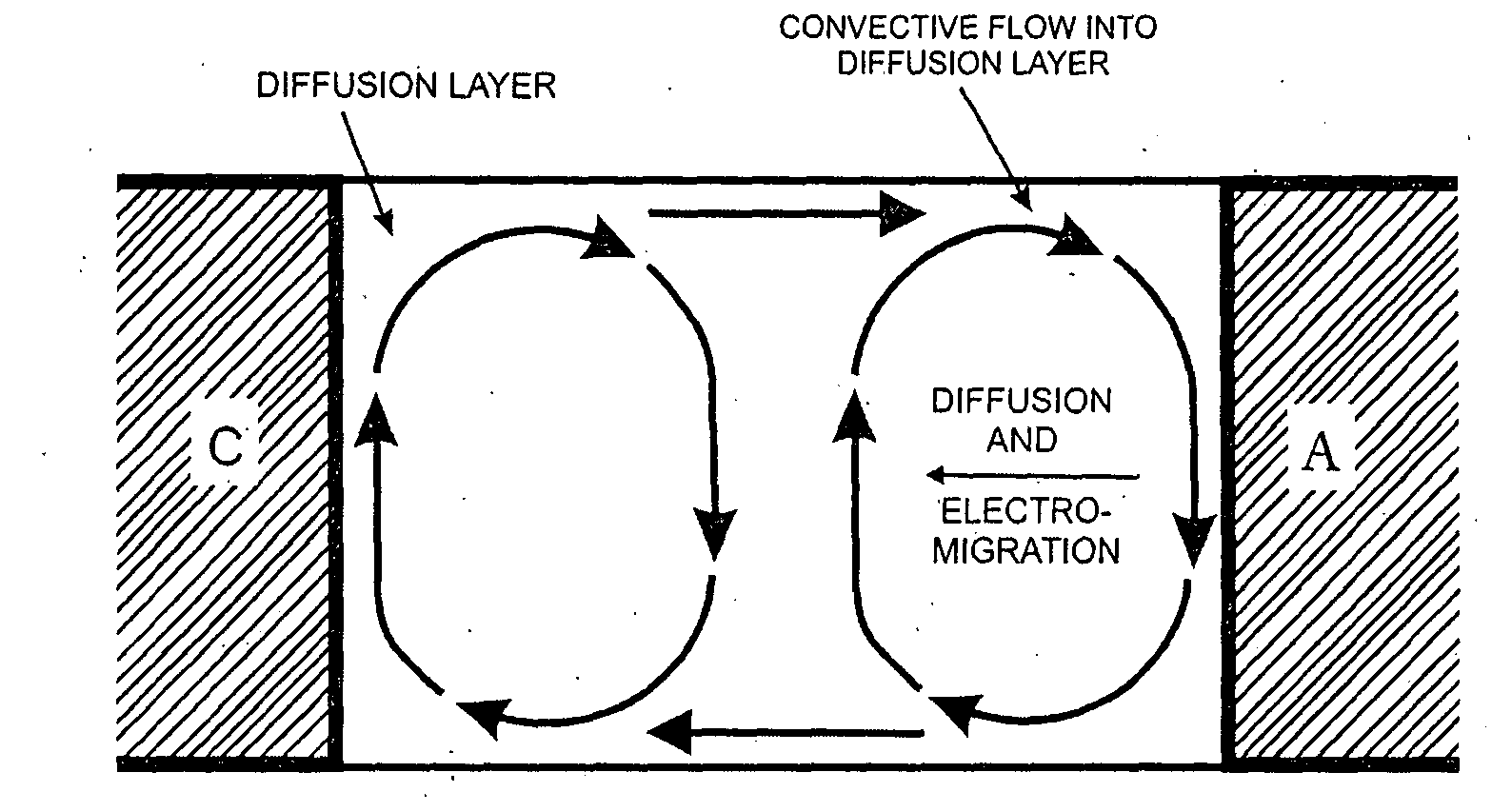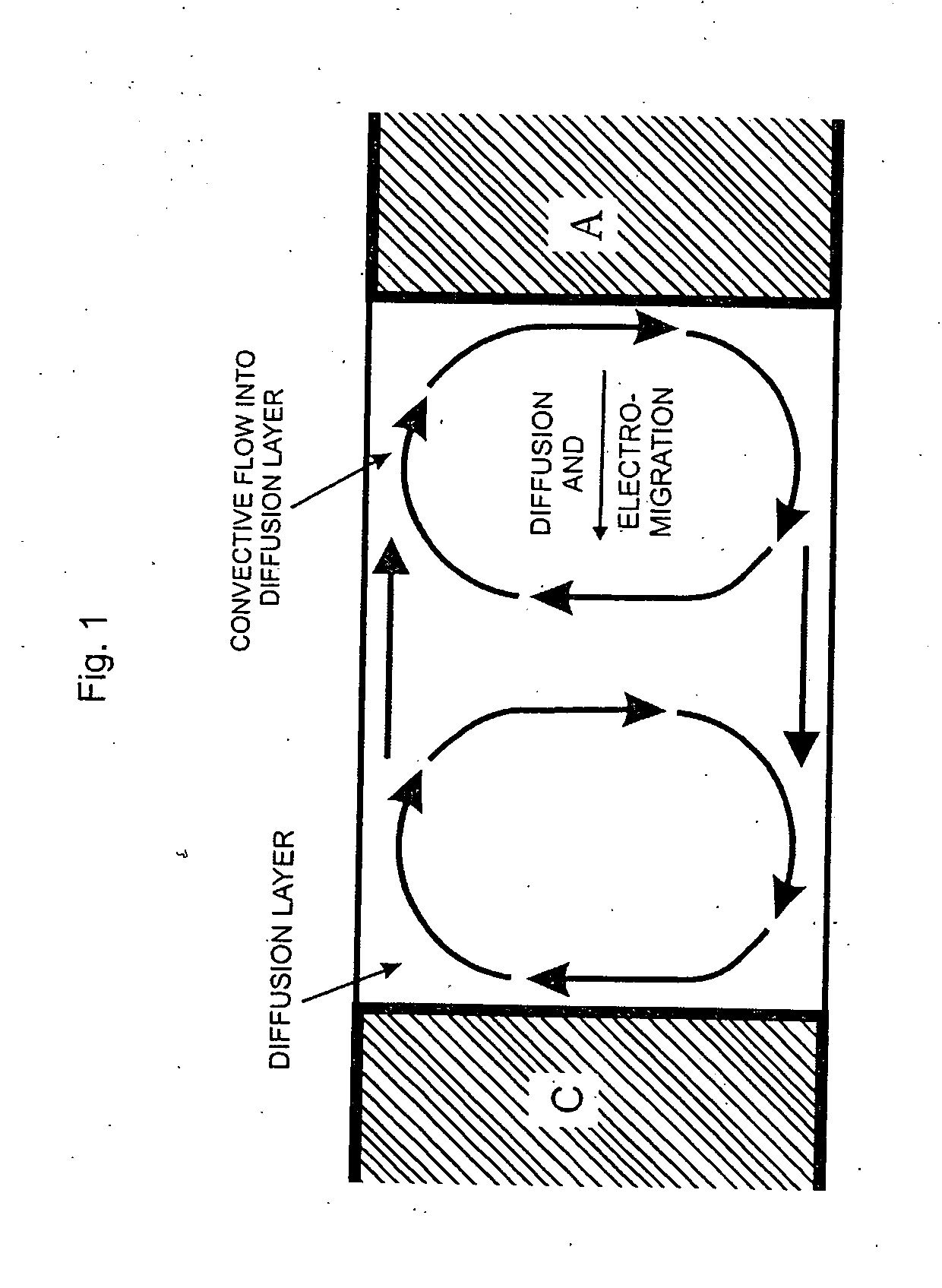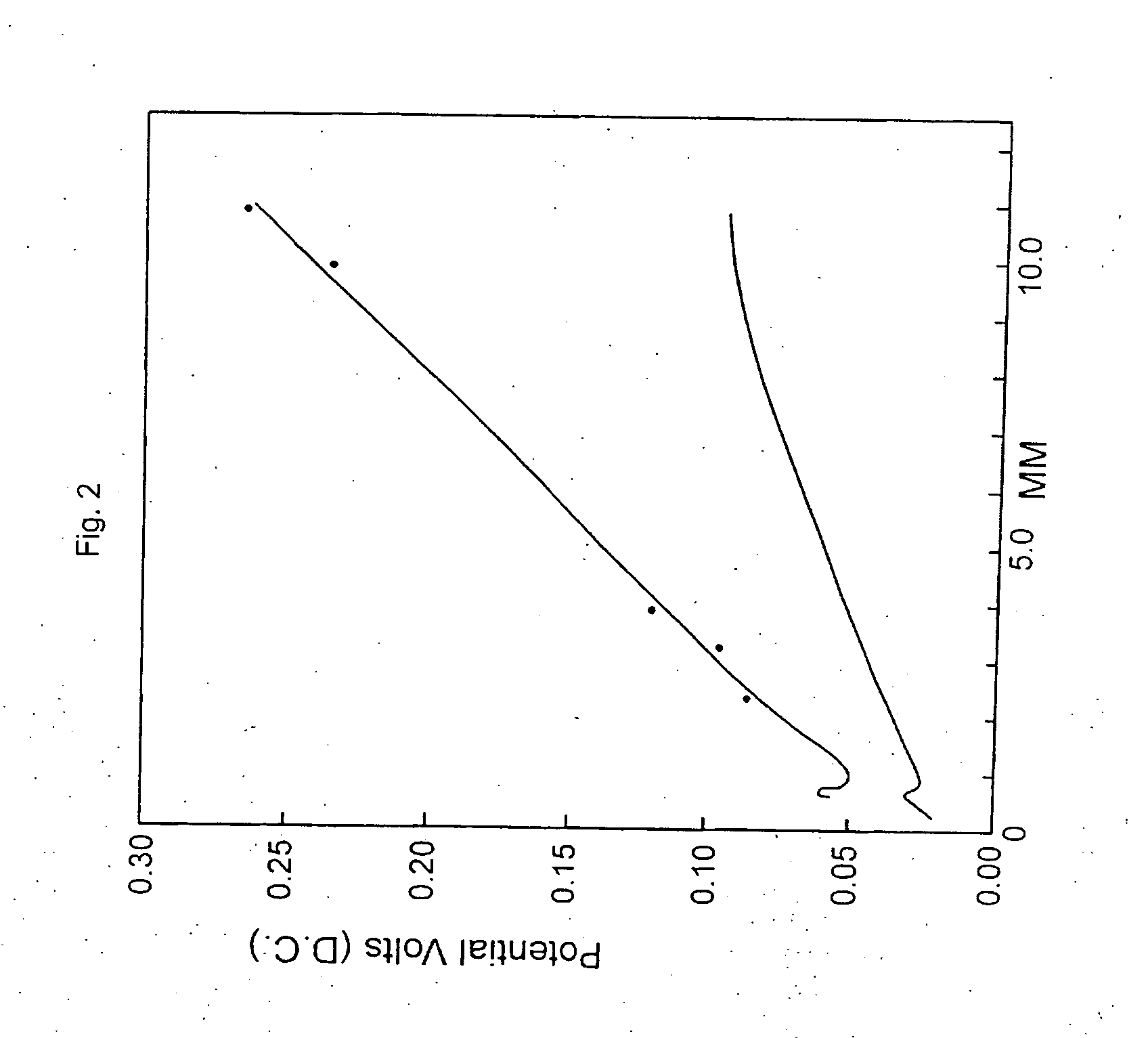Magnetizer utilizing rotated assemblies of permanent magnets
- Summary
- Abstract
- Description
- Claims
- Application Information
AI Technical Summary
Benefits of technology
Problems solved by technology
Method used
Image
Examples
Embodiment Construction
[0046]A particularly and especially advantageous feature of the present invention is that it enables instituting, for any suitably arranged and constituted (magnetically enhanced) electrochemical cell, essentially the same voltage-lowering effect that was discovered in the course of academic investigations by R. N. O'Brien and K. S. V. Santhanam, reported by them in the following publications: “Electrochemical Hydrodynamics in a Magnetic Field with Laser Interferometry”, Electrochimica Acta, 32, 1679 (1987); and Electrochemical Hydrodynamics in Magnetic Fields with Laser Interferometry; Influence of Paramagnetic Ions”, J. Appl. Electrochem., v. 20 (1990). To afford artisans easy access to the early interferometric evidence of this important voltage-lowering effect, the graphs, from these publications FIGS. 4 and 5 should be perused and for practical-sized cells the rest of the figures to FIG. 9. No drawing has been made to show an external source of magnetic field as used in FIGS. 1...
PUM
 Login to View More
Login to View More Abstract
Description
Claims
Application Information
 Login to View More
Login to View More - R&D
- Intellectual Property
- Life Sciences
- Materials
- Tech Scout
- Unparalleled Data Quality
- Higher Quality Content
- 60% Fewer Hallucinations
Browse by: Latest US Patents, China's latest patents, Technical Efficacy Thesaurus, Application Domain, Technology Topic, Popular Technical Reports.
© 2025 PatSnap. All rights reserved.Legal|Privacy policy|Modern Slavery Act Transparency Statement|Sitemap|About US| Contact US: help@patsnap.com



